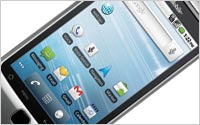Commentary
How Mobile Will Change Search And Display In 2012
- by Laurie Sullivan , Staff Writer @lauriesullivan, December 28, 2011
 Google has developed a framework for the
AdWhirl SDK that allows developers to display banner ads from different networks in their iOS and Android applications, but it also enables them to turn off the refresh rate for ads serving up in apps
on mobile devices. Allowing developers to turn off the refresh rate is significant because the longer the ad remains on the screen visible to the user, the better the chance it will be clicked on.
Google has developed a framework for the
AdWhirl SDK that allows developers to display banner ads from different networks in their iOS and Android applications, but it also enables them to turn off the refresh rate for ads serving up in apps
on mobile devices. Allowing developers to turn off the refresh rate is significant because the longer the ad remains on the screen visible to the user, the better the chance it will be clicked on.
Eric Leichtenschlag on the Google AdMob team tells us that advertisers need only indicate to AdWhirl the ad networks where ads should appear, along with the percentage of requests to allocate to each network. AdWhirl handles the ad requests through Ad Mob. Eliminating the refresh rate prevents AdMob from grabbing and serving up another ad on its own.
Framingham, Mass.-based IDC estimates Google will take 24% market share of the $2.1 billion U.S. mobile ad biz this year -- up from 19% and $877 million, respectively, in 2010. IDC believes Google holds about 91% share of the mobile search market. Combine mobile search with mobile display, and IDC pegs Google's share at 71%, up 11% in the past year.
No doubt about it -- mobile search and display ads will become the hot trend for 2012. In November, IgnitionOne reported that consumer mobile searches rose 355% in the past year, since Q4 2010.
During the Search Insider Summit earlier this month, we asked marketers attending the event to name the percentage of their online budgets earmarked for mobile in 2012. Half of the respondents said they would allocate between 11% and 20%, followed by one-quarter who said between 1% and 5%, and another quarter that said they would allocate between 6% and 10%.
Marketers and advertisers should expect major changes to occur in search for 2012. Brands now imprint QR codes on everything from pickup trucks to billboards, helping consumers find information on the go through smartphones. In a blog recap posted last week, Googlers wrote that 79% of smartphone consumers use their phones to help when shopping by comparing prices and finding more product info. About 70% use their smartphones in a store, and 77% have contacted a business via mobile, with 61% calling and 59% visiting the local business.
Aside from QR codes, marketers should expect a higher dependency on voice search in 2012. Google and Bing launched versions first, but Apple's Siri for the iPhone showed us a better way to get answers and produce actions without typing keywords into a search engine.



